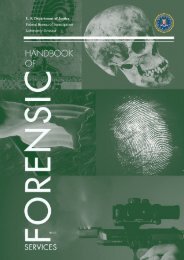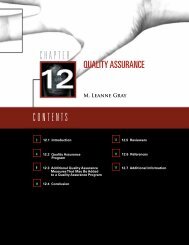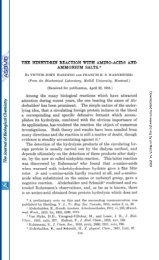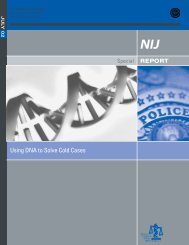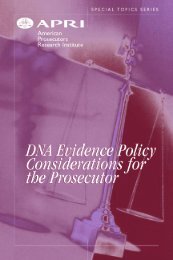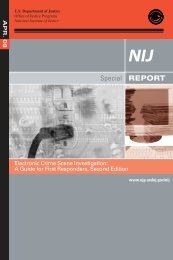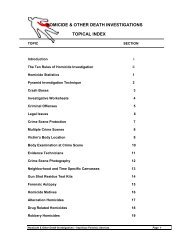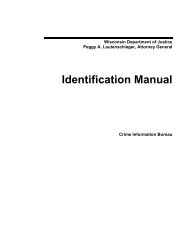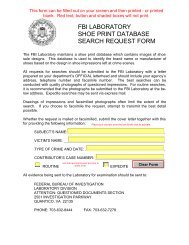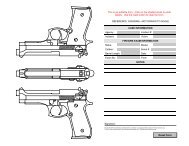Mass Fatality Incidents: A Guide for Forensic Identification
Mass Fatality Incidents: A Guide for Forensic Identification
Mass Fatality Incidents: A Guide for Forensic Identification
- No tags were found...
Create successful ePaper yourself
Turn your PDF publications into a flip-book with our unique Google optimized e-Paper software.
Section 1: Initial Response ConsiderationsLocal agencies are advised to develop andimplement an emergency management planbe<strong>for</strong>e a mass fatality incident. Federal assistancefollowing a disaster may not be immediateand may not be <strong>for</strong>thcoming.I. Determine the Scope of theIncidentresources needed may change as theinvestigation yields additional facts anddetails.II. Know the Role of the MedicalExaminer/CoronerPrinciple. The medical examiner/coroneris responsible <strong>for</strong> establishing the causeand manner of death <strong>for</strong> the purposes ofidentifying the dead and issuing death certificates.Local/State statutes define themedical examiner/coroner’s responsibilities.Principle. A mass fatality incident canhappen anywhere and usually withoutadvance warning. When such an incident Procedure. The medical examiner/coroneroccurs, there are two phases to the is responsible <strong>for</strong> overseeing and coordiresponse—nating the provision and use of resourcesto recover and identify the dead. InitialA. Stabilizing the scene and rescuing the considerations include—injured.A. Preparing morgue/autopsy facilities.B. Recovering and identifying humanremains and evidence.Procedure. It is important that respondersen route to or arriving at the scene ask thefollowing questions to comprehend theextent of the incident—B. Establishing security and credentialingsystems.C. Coordinating the transportation ofremains from the scene to themorgue.A. What happened? D. Coordinating activities with the familyassistance center (FAC), as appropriate.B. Where did it happen?About the AuthorsE. Establishing communications and dataThe Technical Working C. How many injuries/fatalities are management systems.Group <strong>for</strong> <strong>Mass</strong> <strong>Fatality</strong> involved?<strong>Forensic</strong> <strong>Identification</strong> is a F. Establishing fiscal and materialmultidisciplinary group of D. What are the known hazards? requirements.practitioners and subjectE. What agencies are (or could become)matter experts fromG. Identifying the deceased.across the United States, involved?Canada, and EasternH. Issuing death certificates.F. Where is the scene command postEurope. Each participantlocated? I. Establishing a system <strong>for</strong> dispositionhas experience with colofthe remains.lecting, processing, andG. How will the scene be secured?identifying humanSummary. The medical examiner/coroner’sremains in the wake of a Summary. Answering these questions responsibilities include determining themass fatality incident. quickly will enable responders to notify cause and manner of death, identifyingand mobilize all appropriate resources. the dead, and returning the remains to theKeep in mind that the type and amount of legal next of kin.1




